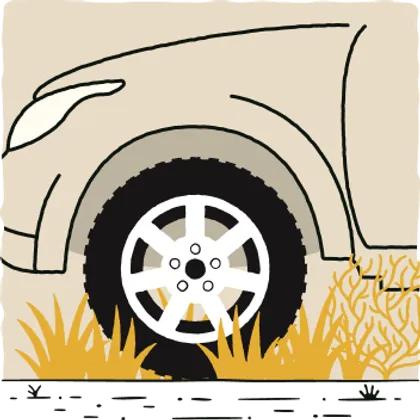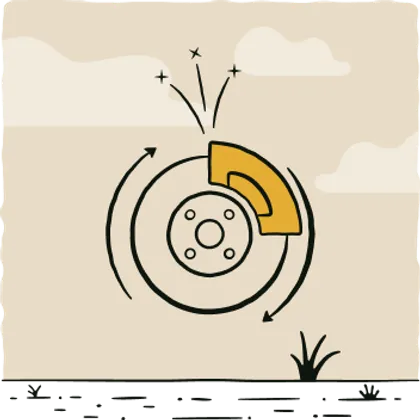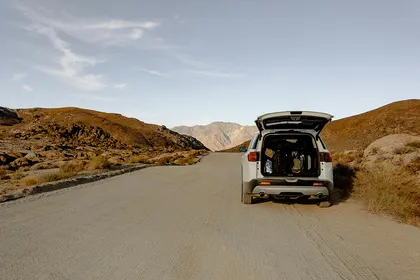Vehicle Safety Guide
Tie Up Chains
Step 01 Learn how to tow safely
-
Use safety pins on your hitch
Make sure chains are attached to your vehicle and off the ground to prevent them from dragging.
-
Secure tow chains
Cross and twist chains between your vehicle and trailer to keep them off the ground and prevent them from dragging, as they can cause sparks.
-
Use a chain guard
Be sure chains and other metal parts aren't dragging, as this can also cause sparks.

Check Tires
Step 02 Take care of your tires
-
Keep tires fully inflated
Driving on an exposed wheel rim can cause sparks.

Avoid Dry Grass
Step 03 Be careful driving and parking
-
Be careful driving through dry grass or brush
The undercarriage of your car is hot and can catch the grass on fire and start a wildfire. Stay on designated roads.
-
Avoid parking on dry grass or tall weeds
Always park on pavement when available; if not, park on wet or green vegetation instead. Parking on dry grass or tall weeds with a hot car can start a wildfire.

Maintain Brakes
Step 04 Take care of your brakes
-
Replace worn or thin brakes
Metal-on-metal contact may cause sparks.

